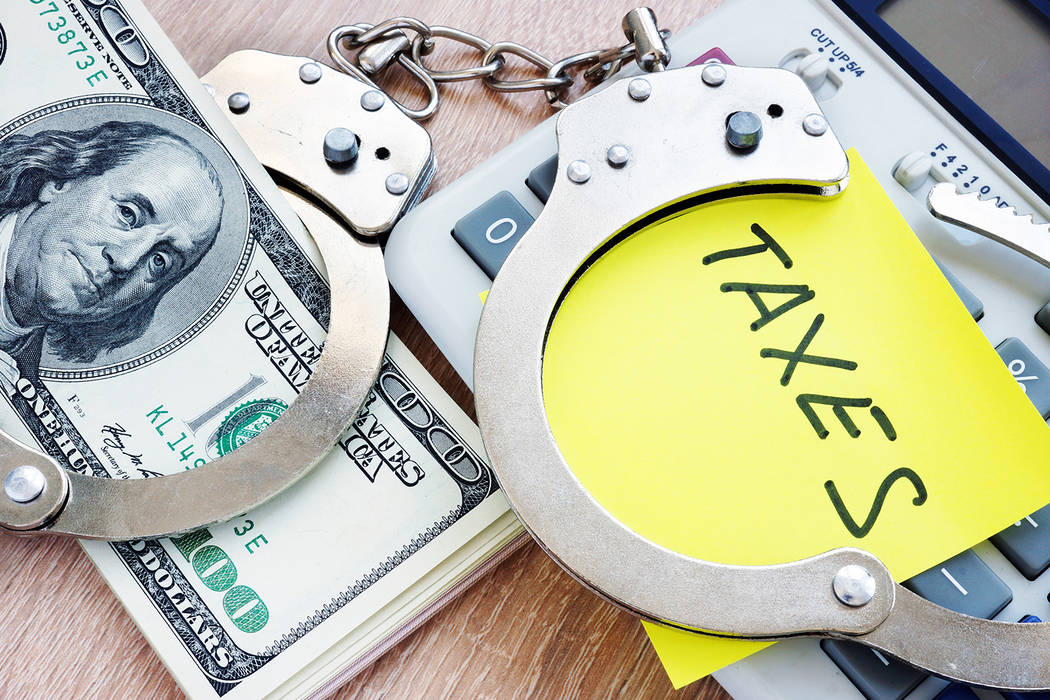IRS sees surge in email phishing scams
With the holidays here and the 2019 filing season, the Internal Revenue Service, state tax agencies and the nation’s tax industry warned people to be on the lookout following a surge of new, sophisticated email phishing scams, the IRS announced.
Taxpayers saw many more phishing scams in 2018 as the IRS recorded a 60 percent increase in bogus email schemes that seek to steal money or tax data. These schemes can endanger a taxpayer’s financial and tax data, allowing identity thieves a chance to try stealing a tax refund.
The Internal Revenue Service, state tax agencies and the tax community, partners in the Security Summit, are marked “National Tax Security Awareness Week” Dec. 3 -7, with a series of reminders to taxpayers and tax professionals.
“The holidays and tax season present great opportunities for scam artists to try stealing valuable information through fake emails,” said IRS Commissioner Chuck Rettig. “Watch your inbox for these sophisticated schemes that try to fool you into thinking they’re from the IRS or our partners in the tax community. Taking a few simple steps can protect yourself during the holiday season and at tax time.”
In the second part of the recent National Tax Security Awareness Week series, the IRS and Summit partners warned against a new influx of phishing scams.
Tax-related phishing scams reported to the IRS declined for the prior three years until a surge in 2018. More than 2,000 tax-related scam incidents were reported to the IRS from January through October, compared to approximately 1,200 incidents in all of 2017.
One recent malware campaign used a variety of subjects like “IRS Important Notice,” “IRS Taxpayer Notice” and other variations. The phishing emails, which use varying language, demands a payment or threatens to seize the recipient’s tax refund.
Taxpayers can help spot these schemes by examples of misspelling and bad grammar. Taxpayers can forward these email schemes to phishing@irs.gov.
The most common way for cybercriminals to steal money, bank account information, passwords, credit cards or Social Security numbers is to simply ask for them. Every day, people fall victim to phishing scams or phone scams that cost them their time and their cash, the IRS said in its news release.
Phishing attacks use email or malicious websites to solicit personal, tax or financial information by posing as a trustworthy organization. Often, recipients are fooled into believing the phishing communication is from someone they trust.
A scam artist may take advantage of knowledge gained from online research and earlier attempts to masquerade as a legitimate source, including presenting the look and feel of authentic communications, such as using an official logo, the IRS said. These targeted messages can trick even the most cautious person into taking action that may compromise sensitive data.
The scams may contain emails with hyperlinks that take users to a fake site. Other versions contain PDF attachments that may download malware or viruses.
Some phishing emails will appear to come from a business colleague, friend or relative. These emails might be an email account compromise. Remember, criminals may have compromised your friend’s email account and begin using their email contacts to send phishing emails.
Not all phishing attempts are emails – some are phone scams. One of the most common phone scams is the caller pretending to be from the IRS and threatening the taxpayer with a lawsuit or with arrest if payment is not made immediately, usually through a debit card.
A closer look
Here are a few steps to take to protect against phishing and other tax-related schemes:
- Be vigilant; be skeptical. Never open a link or attachment from an unknown or suspicious source. Even if the email is from a known source, approach with caution. Cybercrooks are adept at mimicking trusted businesses, friends and family — including the IRS and others in the tax business. Thieves may have compromised a friend's email address, or they may be spoofing the address with a slight change in text, such as name@example.com vs narne@example.com. In the latter, merely changing the "m" to an "r" and "n" can trick people.
- Remember, the IRS doesn't initiate spontaneous contact with taxpayers by email to request personal or financial information. This includes asking for information via text messages and social media channels. The IRS does not call taxpayers with aggressive threats of lawsuits or arrests.
- Phishing schemes thrive on people opening the message and clicking on hyperlinks. When in doubt, don't use hyperlinks and go directly to the source's main web page. Remember, no legitimate business or organization will ask for sensitive financial information via email.
- Use security software to protect against malware and viruses found in phishing emails. Some security software can help identify suspicious websites that are used by cybercriminals.
- Use strong passwords to protect online accounts. Each account should have a unique password. Use a password manager if necessary. Criminals count on people using the same password repeatedly, giving crooks access to multiple accounts if they steal a password - creating opportunities to build phishing schemes. Experts recommend the use of a passphrase, instead of a password, use a minimum of 10 digits, including letters, numbers and special characters. Longer is better.
- Use multi-factor authentication when offered. Some online financial institutions, email providers and social media sites offer multi-factor protection for customers. Two-factor authentication means that in addition to entering your username and password, you must enter a security code generally sent as a text to your mobile phone. Even if a thief manages to steal usernames and passwords, it's unlikely the crook would also have a victim's phone.
Source: IRS














